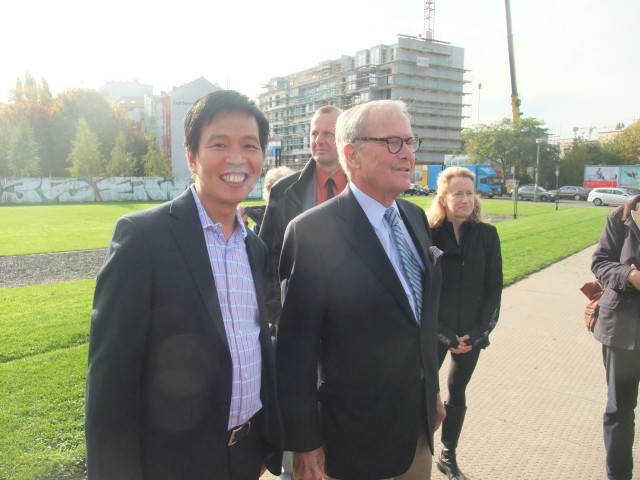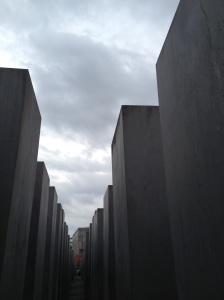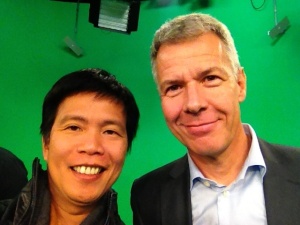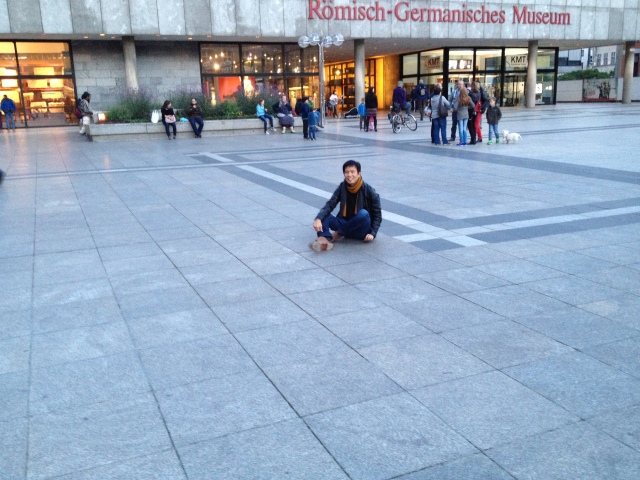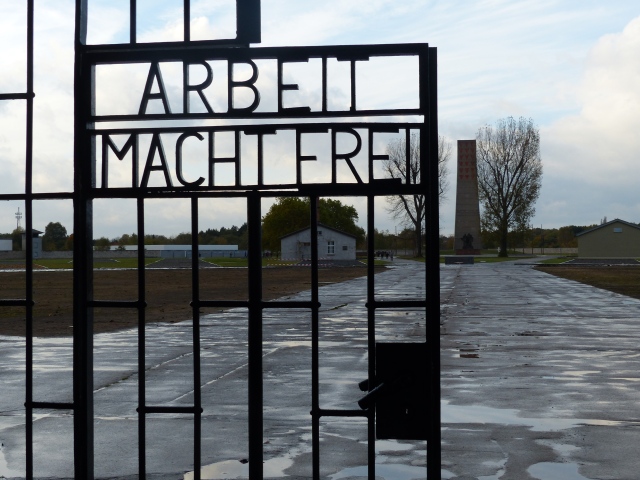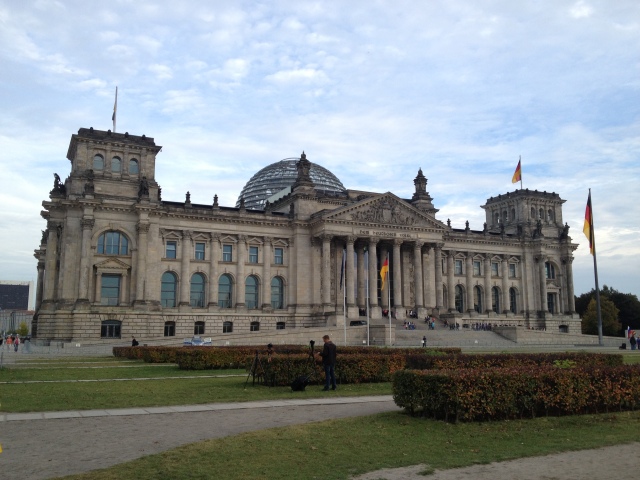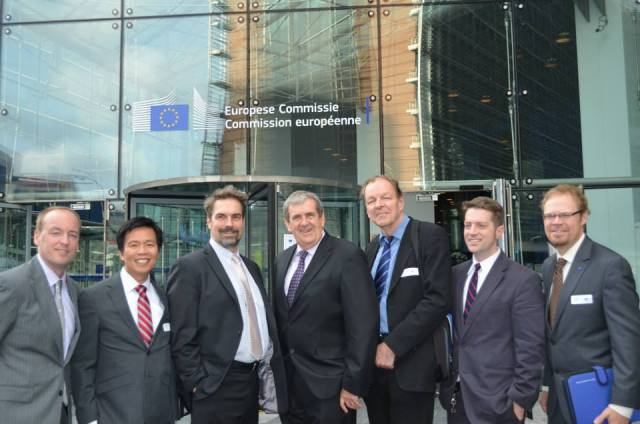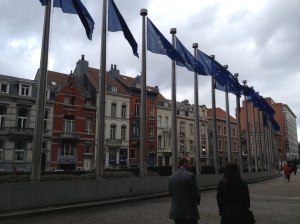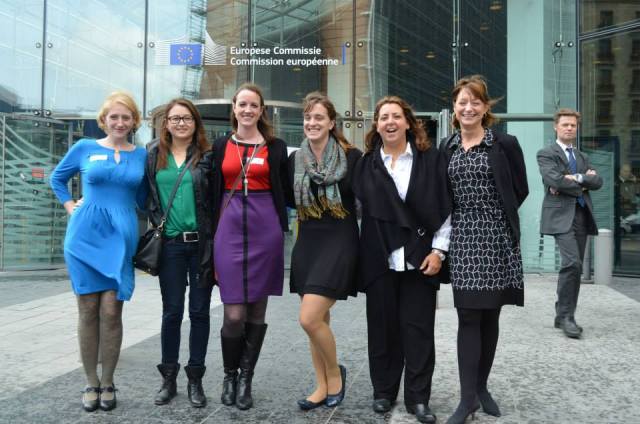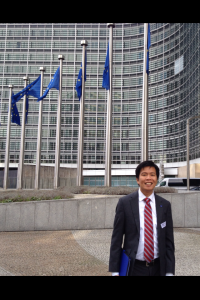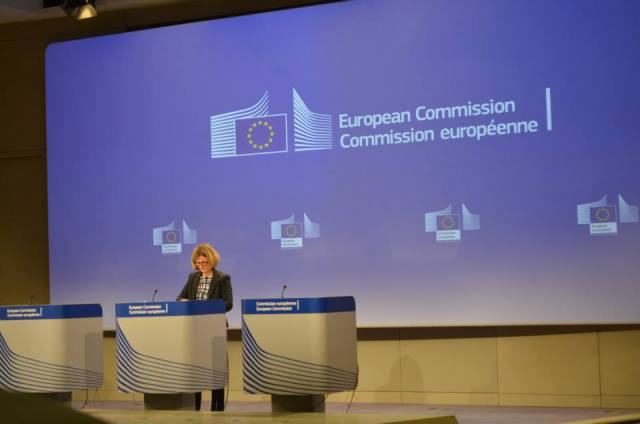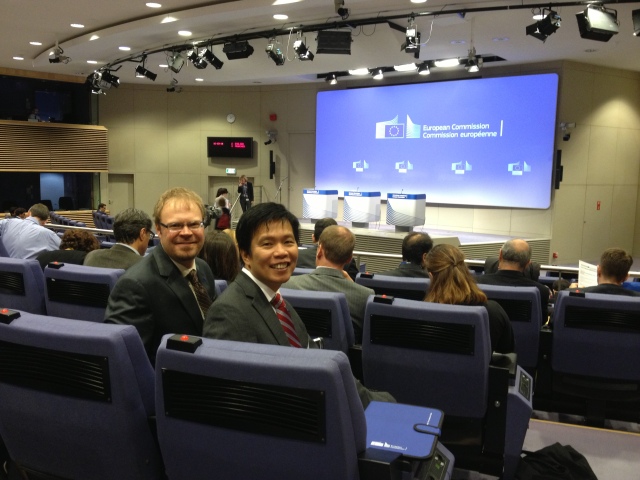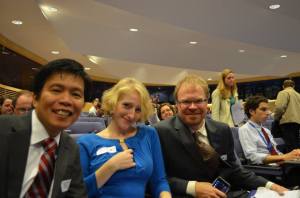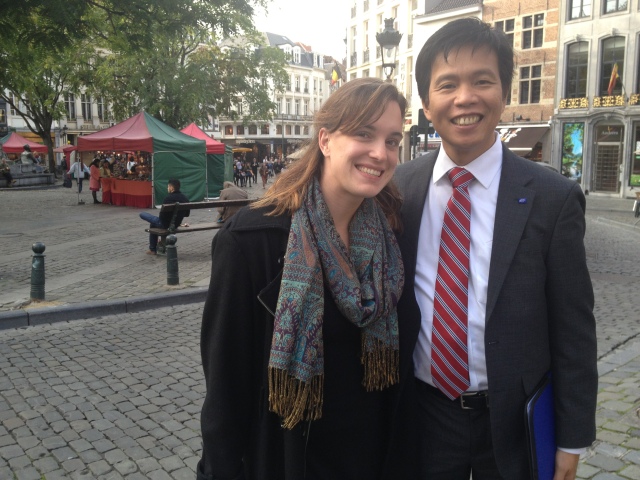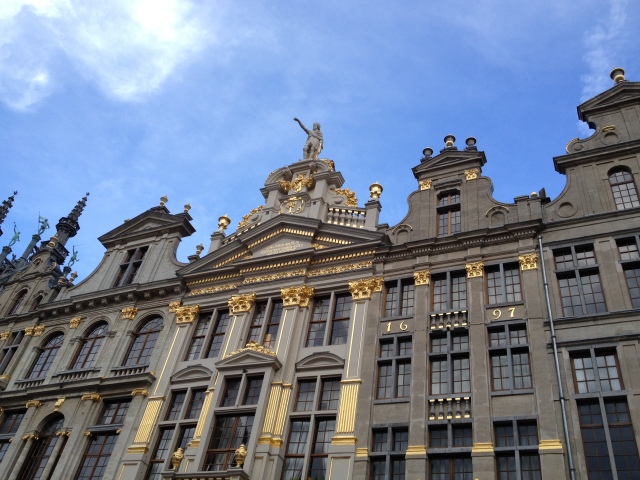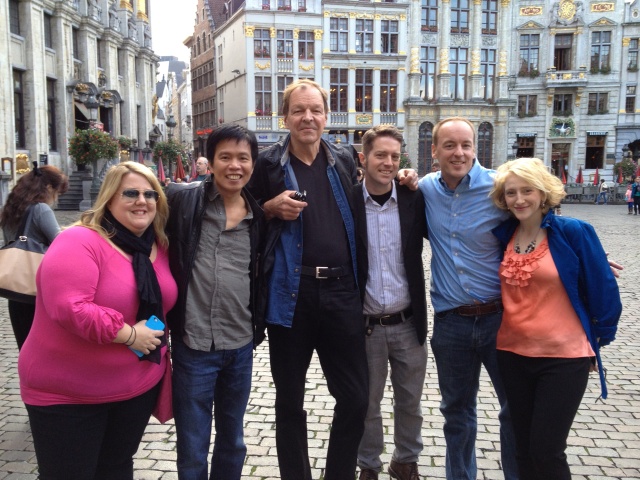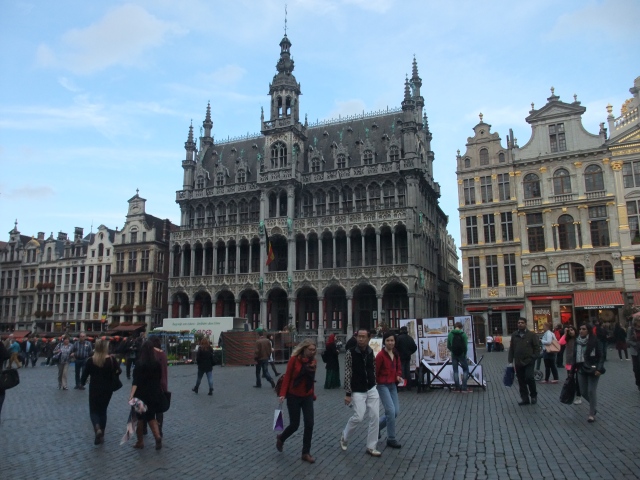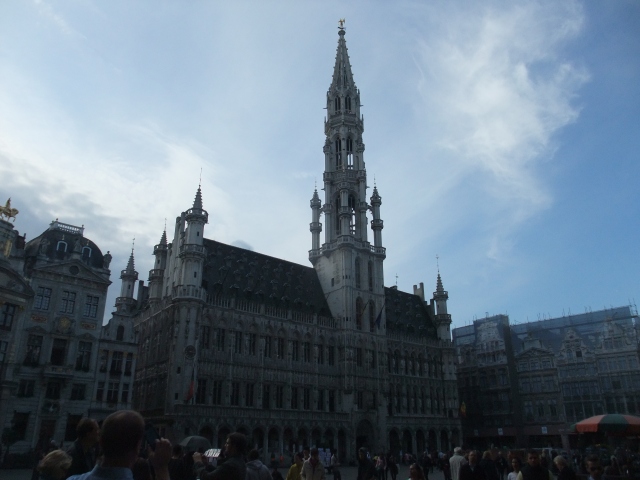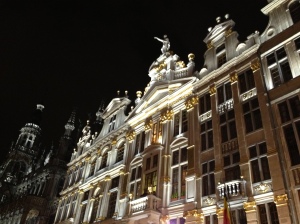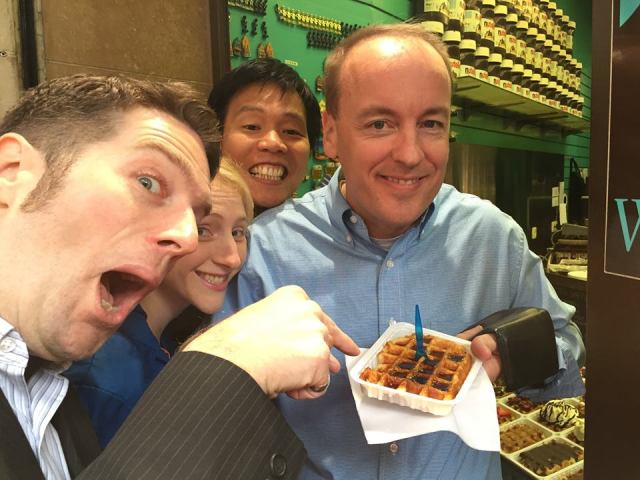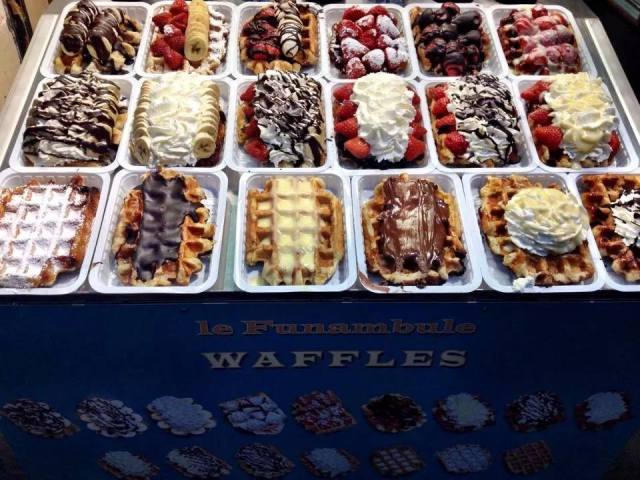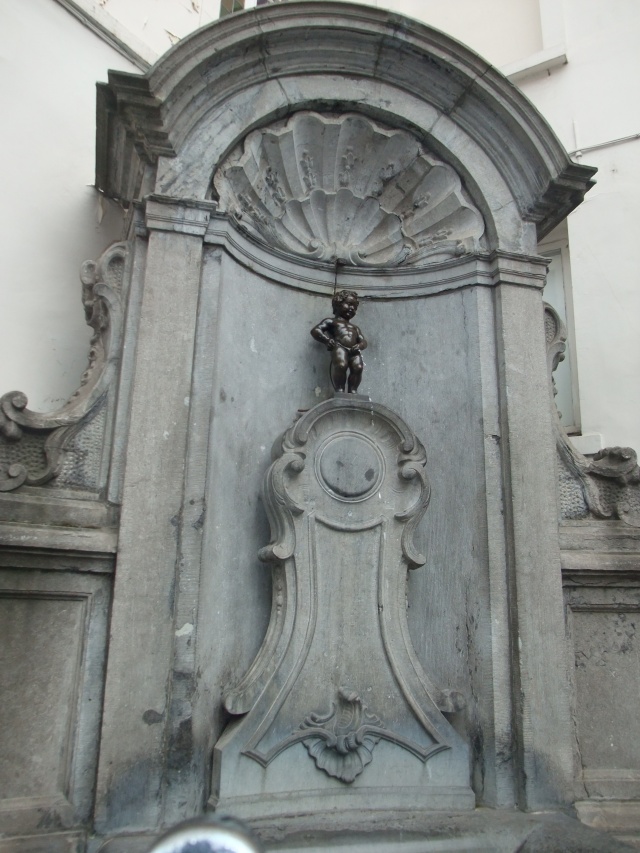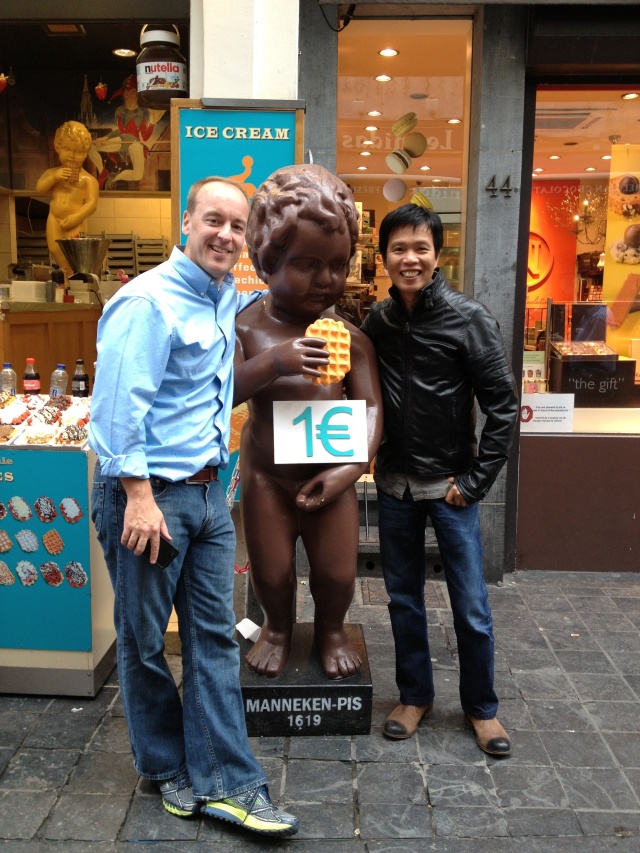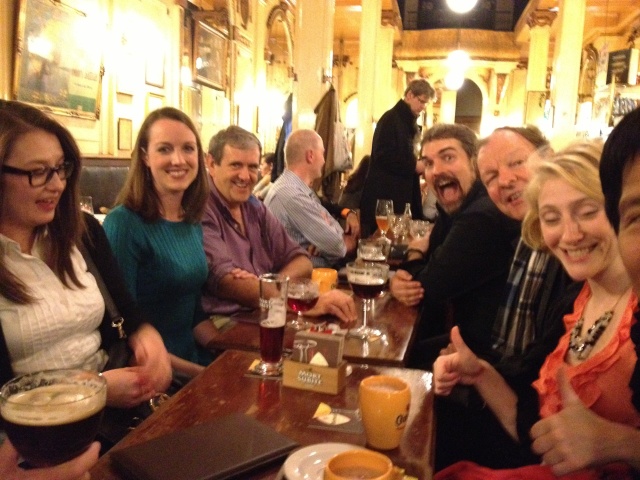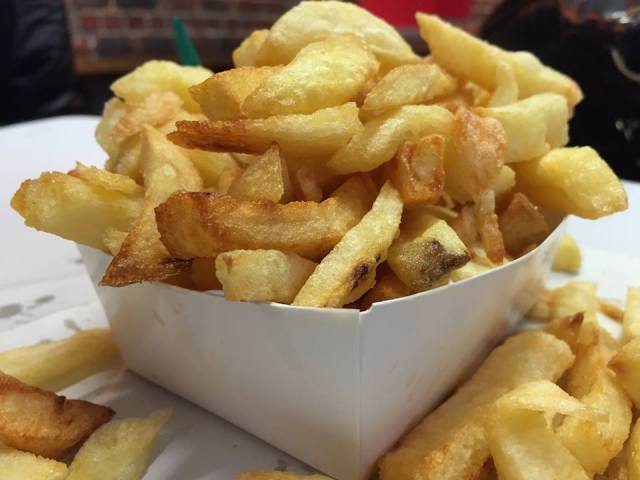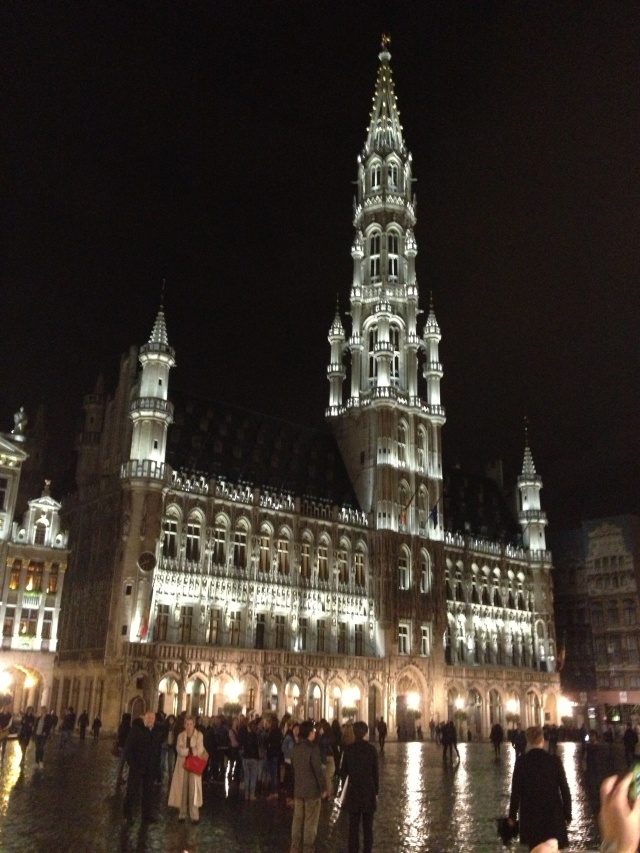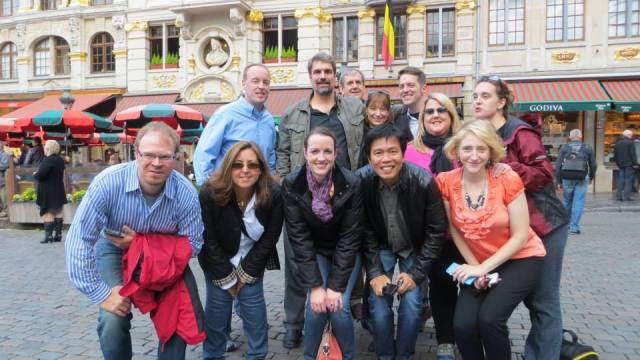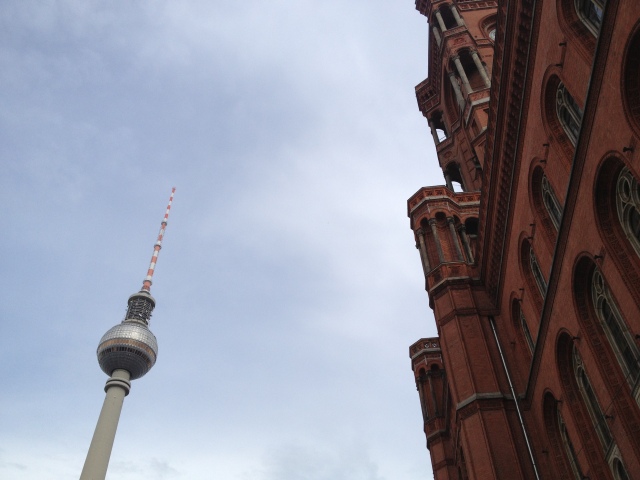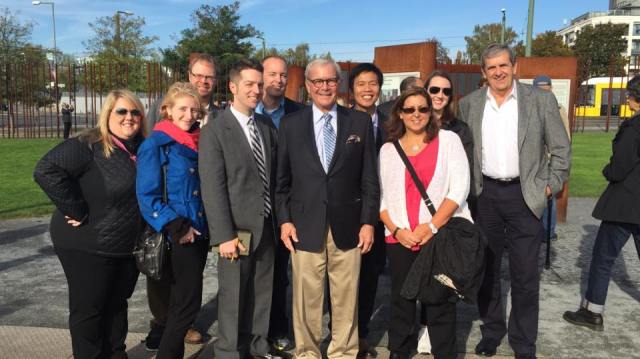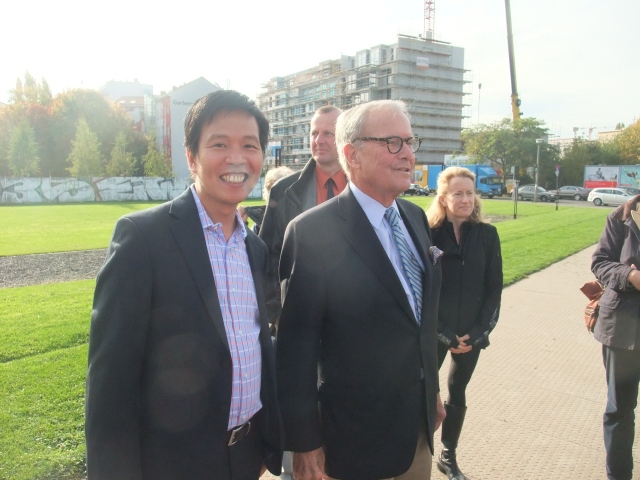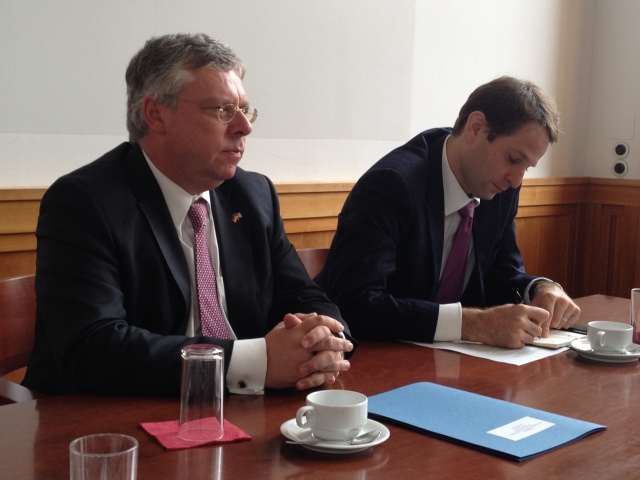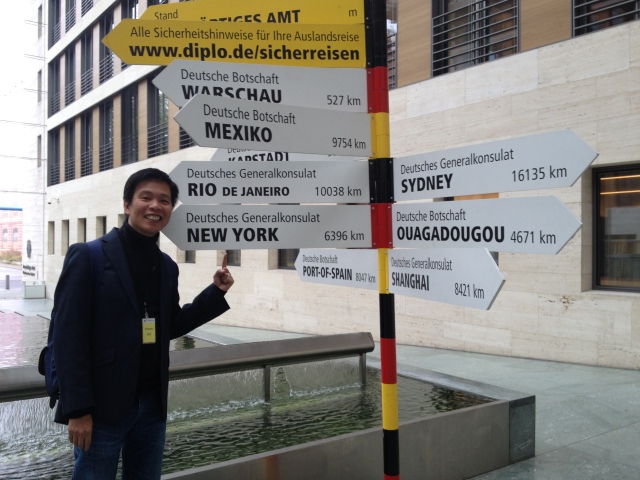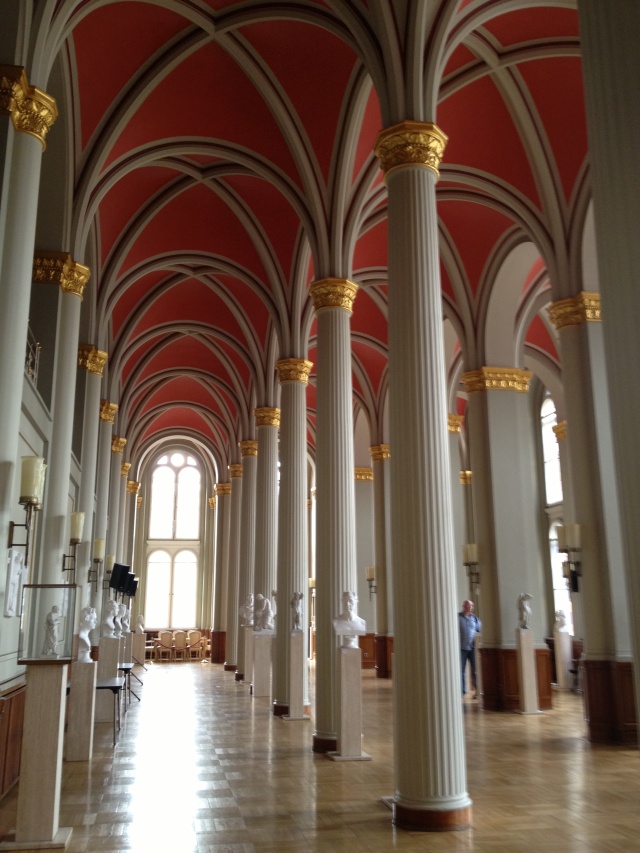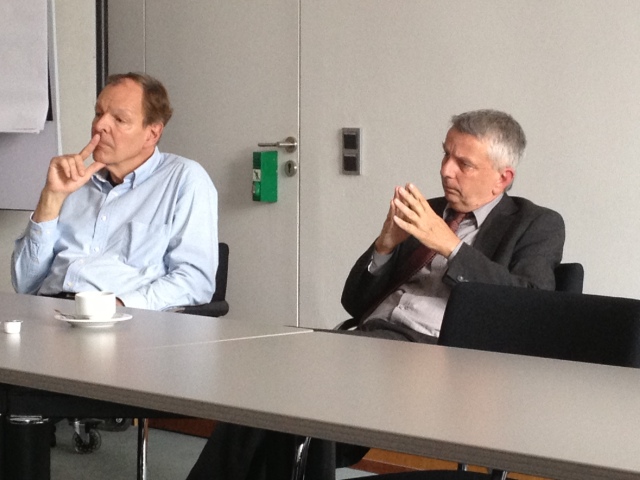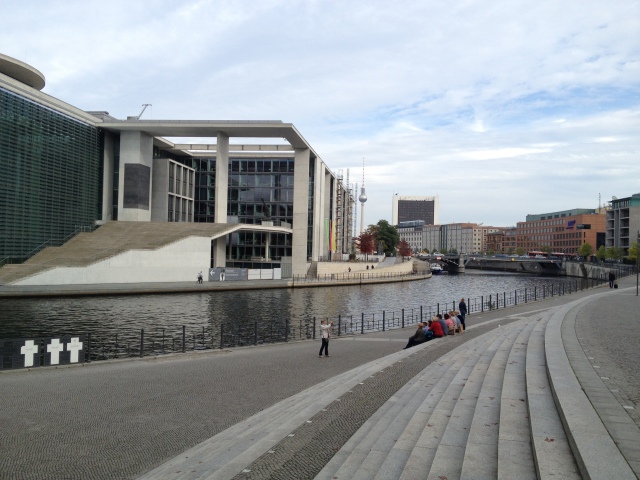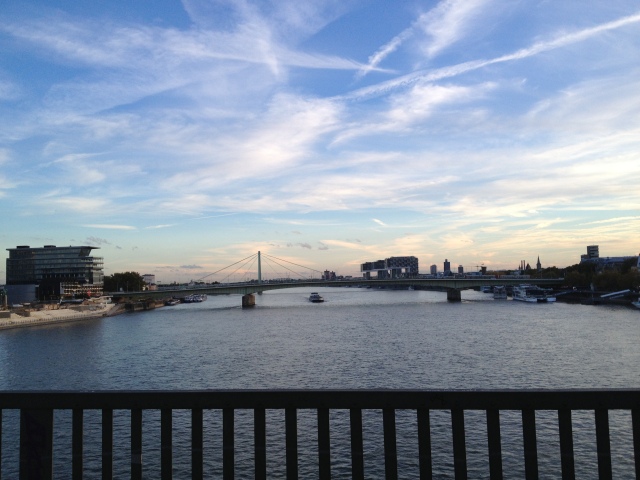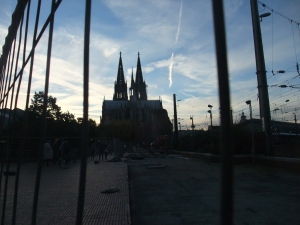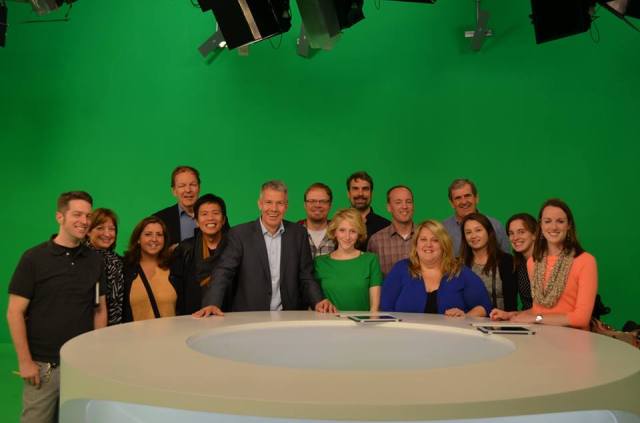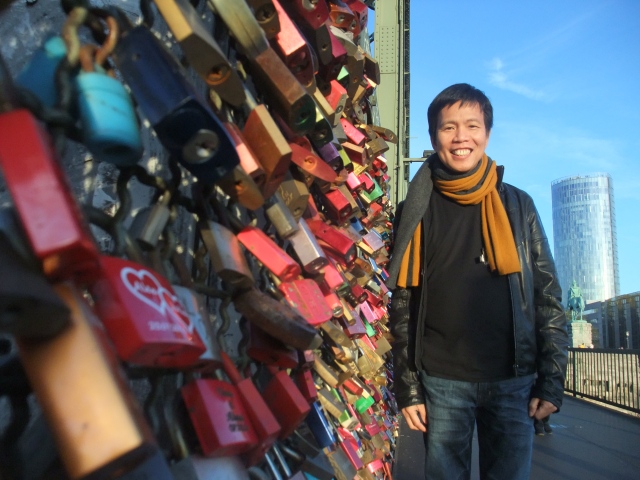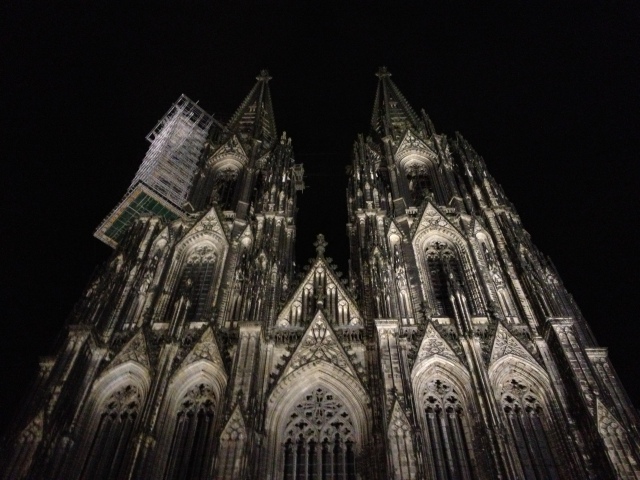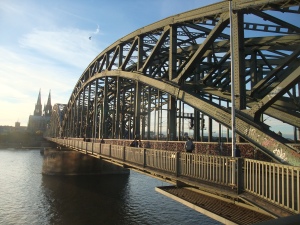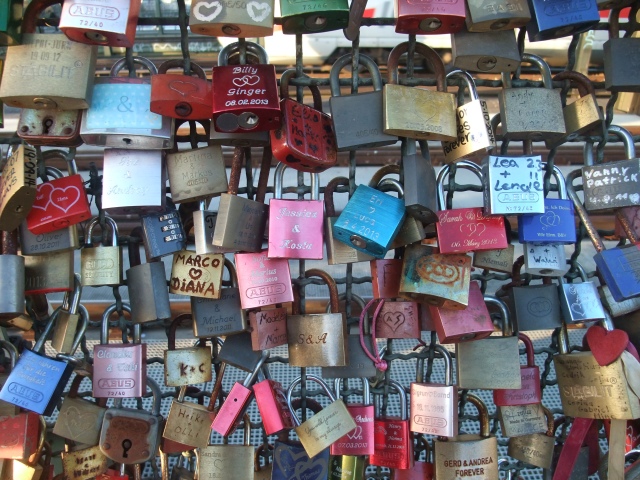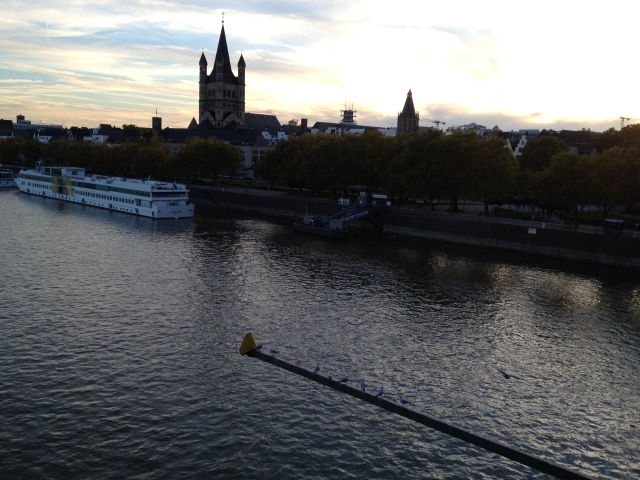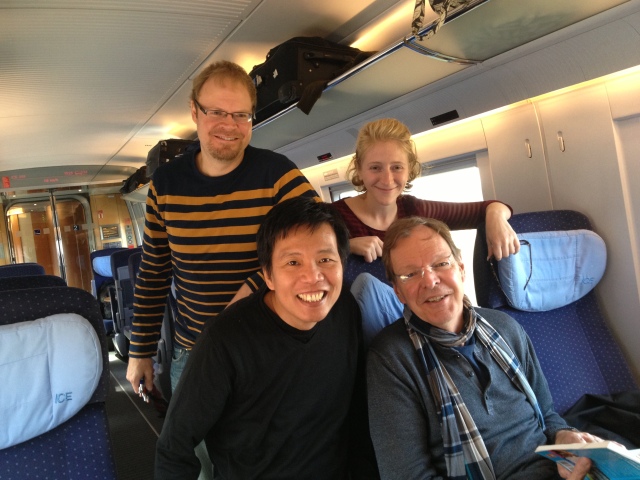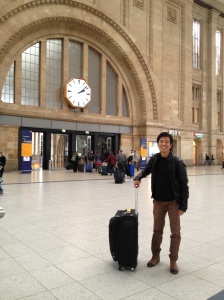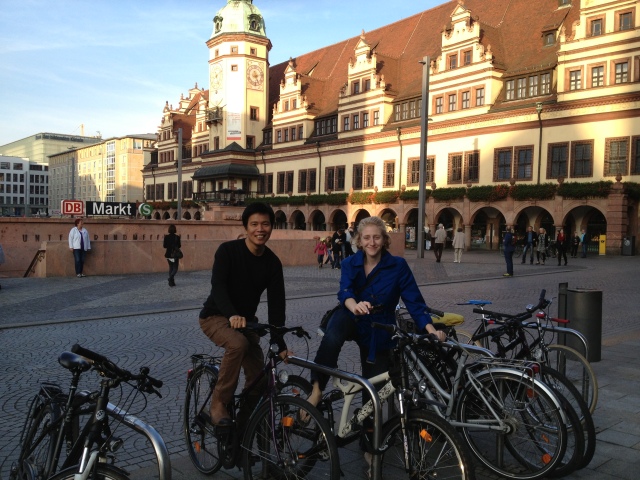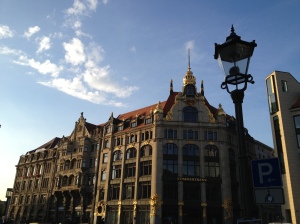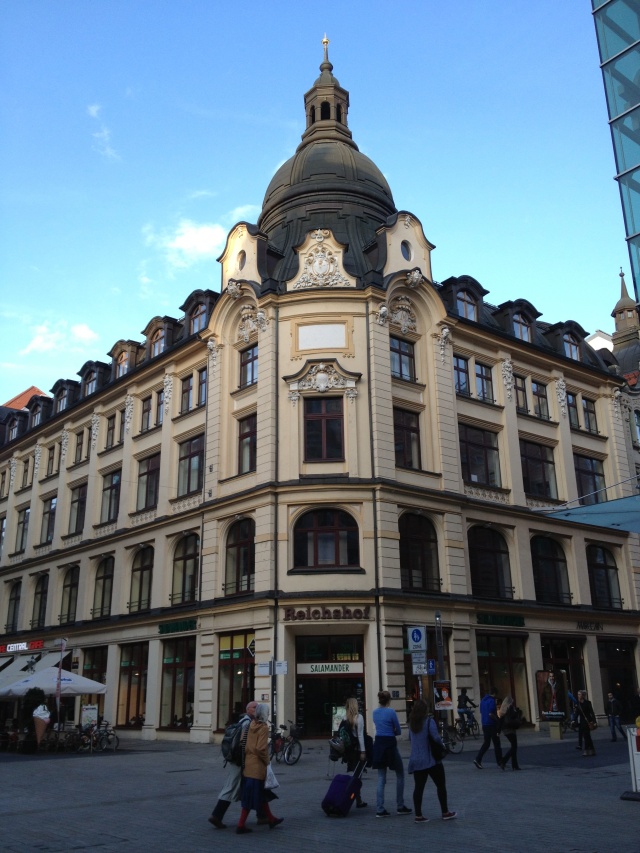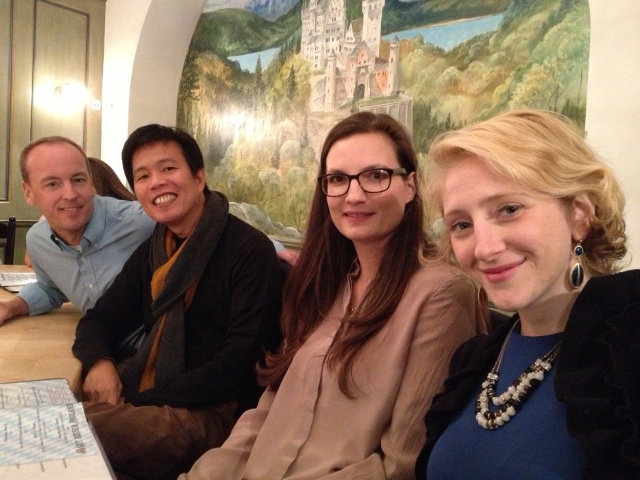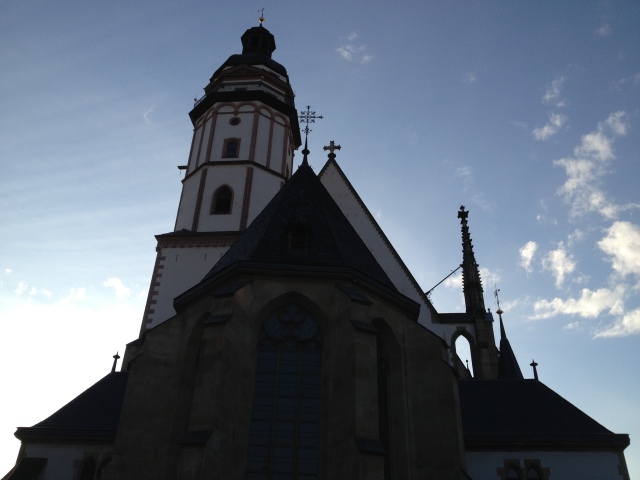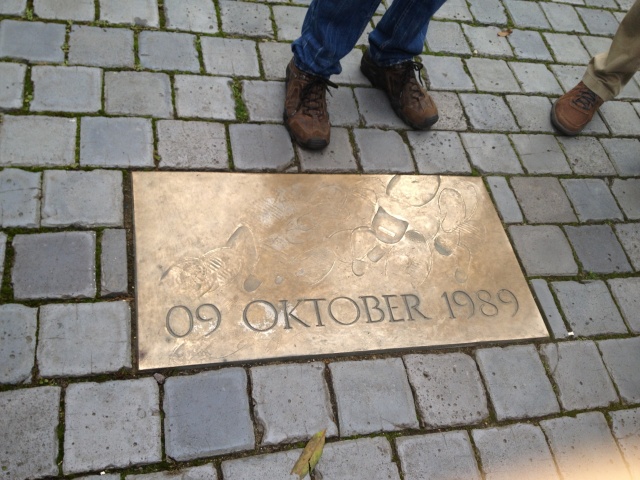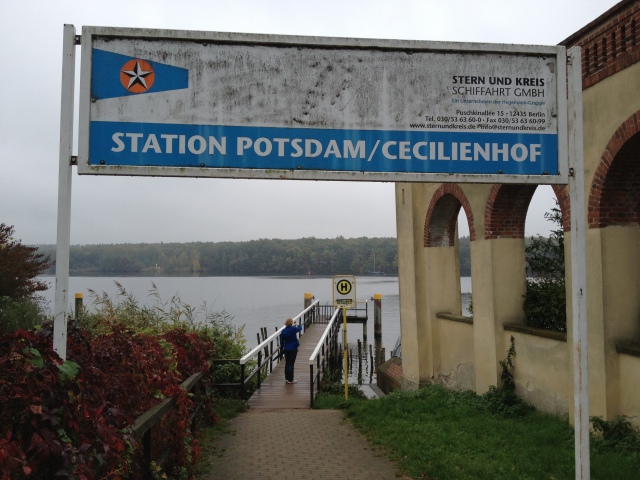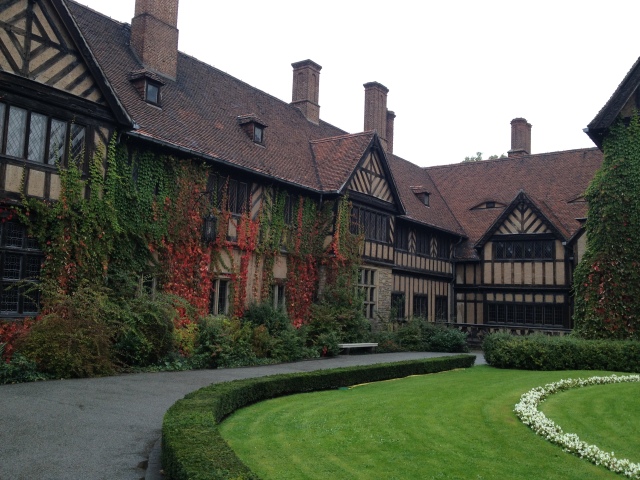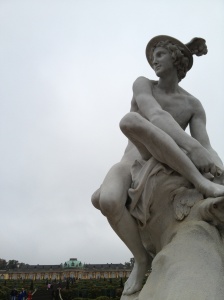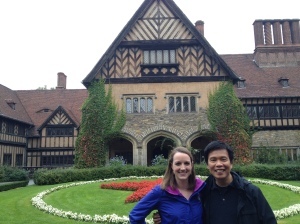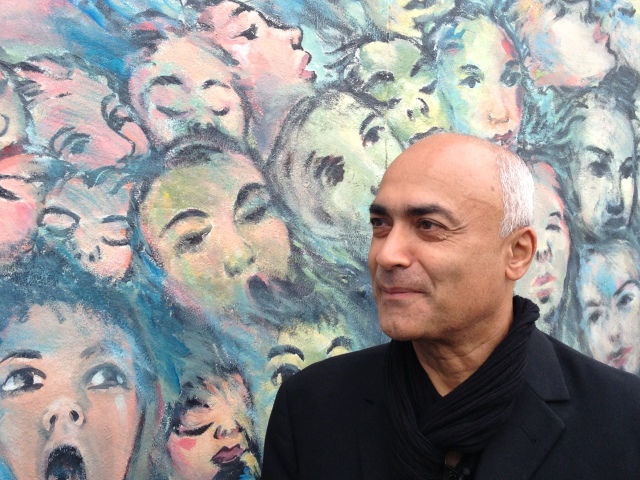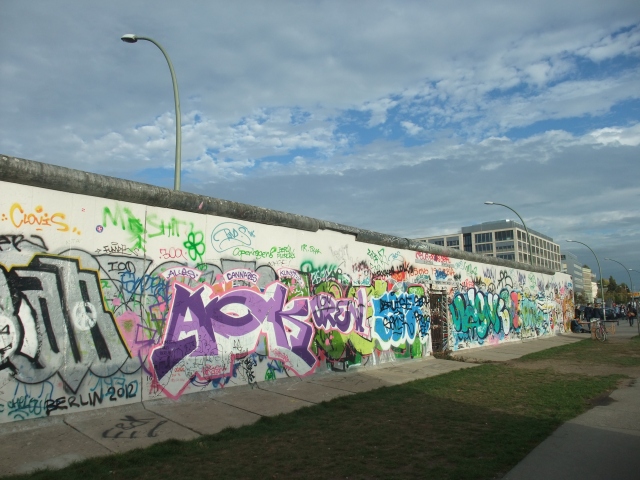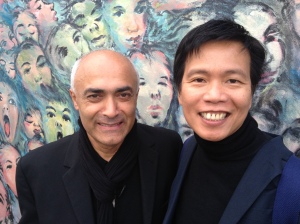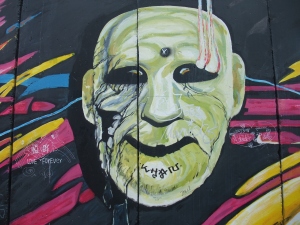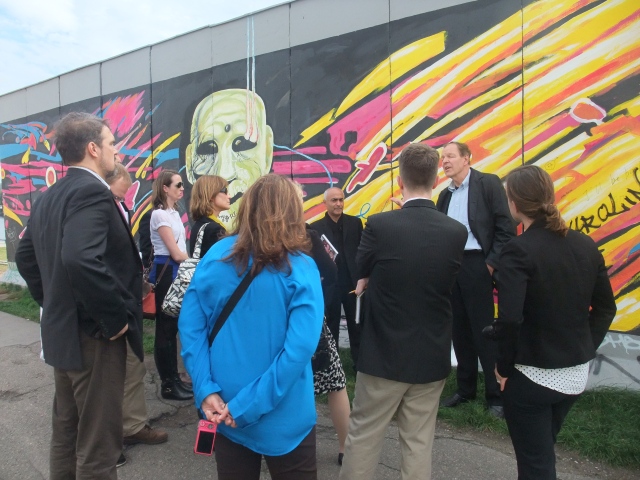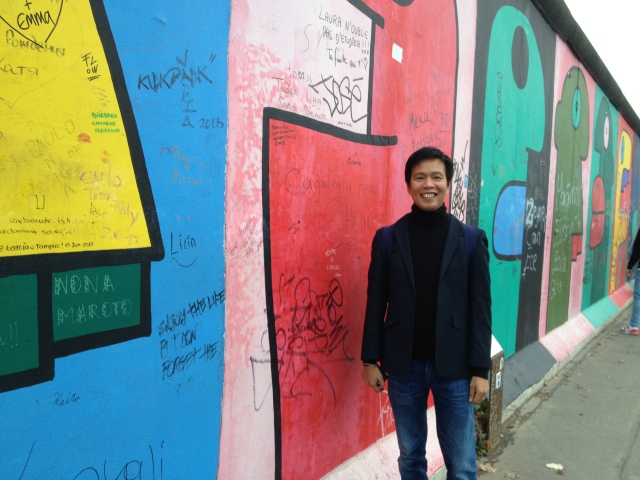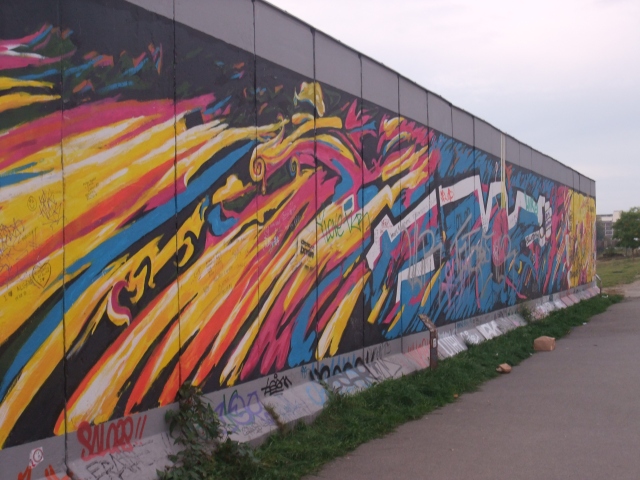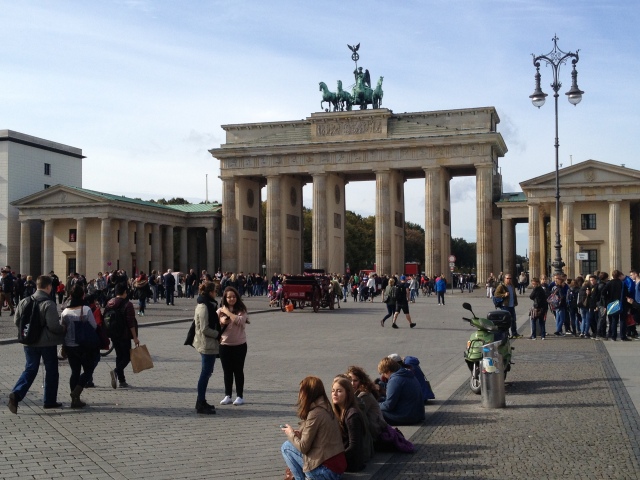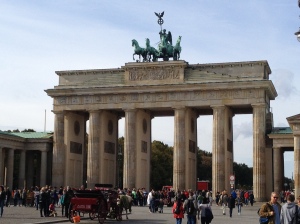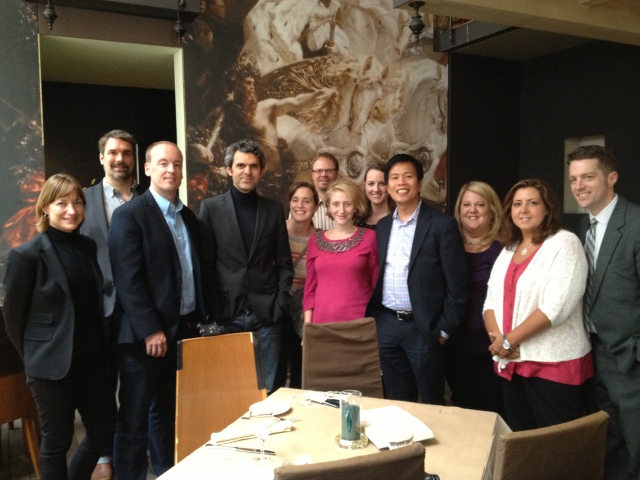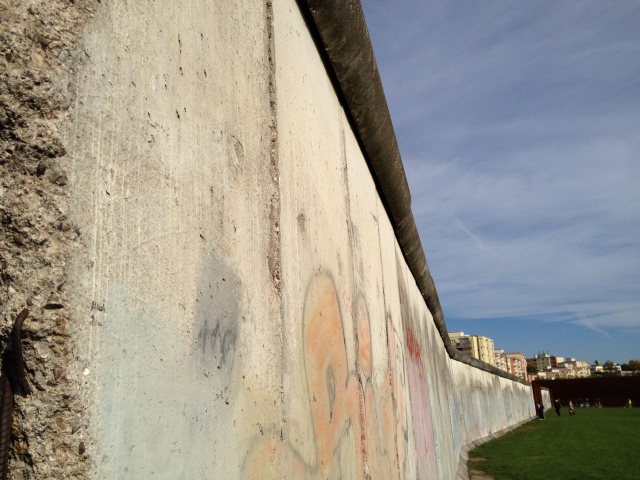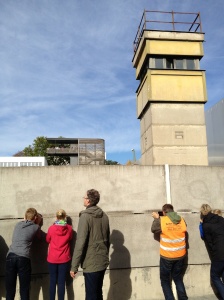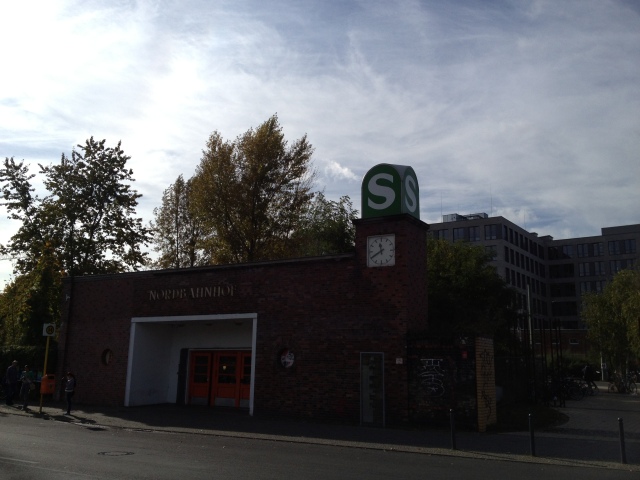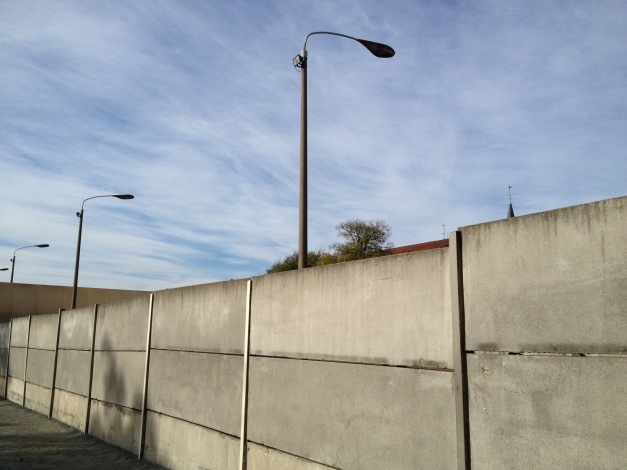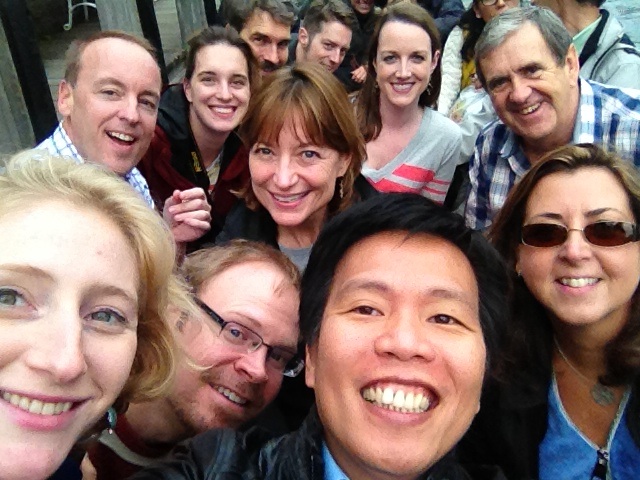
Self-proclaimed “Best Selfie” of the October 2014 fellows, taken during the last night of the trip, in Bruge, Belgium
Oranienberg is the last stop.
That was echoing in my head as I sat by the window of S1-Bahn train, watching suburban houses and buildings awash with stark graffiti. Three days after our RIAS fellowship ended in Belgium, I found myself heading for the Sachsenhausen Concentration Camp, an hour north of Berlin. It was overcast late Tuesday afternoon.
Squinting at the small map above my head, I had about 10 more stops before the end of the line. German transit is on the honor system, but the trip was long enough that a random ticket inspection might occur at some point.
This could be a test, I thought, of whether the system actually works. I was up for the challenge because I knew I had a validated ticket in my pocket. But the train passed all the stops and finally reached Oranienberg, and I felt oddly disappointed that no inspection had happened along the way.
My RIAS fellowship has made me learn the ropes of a country I barely knew before I embarked on a two-week journey with 11 other U.S. journalists. Many times during the trip, I was fascinated and puzzled at how an honor system works in a highly developed country, a home to more than 80 million people. I could not help but wonder whether it is something that the U.S. transit system could adapt for major American cities. Truth be told, I wish I would not have to swipe my Metrocard and dash through a turnstile every time I catch a train at home in New York City.
On the first day of the program, I was astonished at the developments in Berlin. Gone were the war-ravaged buildings and desolate spaces that I had imagined still existed. The wide boulevards on the former East-West corner of Potsdamer Platz, with rows of establishments looming on both sides, are now teeming with activity. There are modern shopping malls everywhere, and almost everyone speaks fluent English and seems welcoming to foreigners, from the young ones walking in groups on the streets to the bus driver who took me to Berlin Hauptbahnhof.
In Heilig-Geist-Kirche, a Catholic church located about six stops from downtown Berlin via U2-Bahn, I met with second-generation, German-born men and women of Chinese, Filipino and Thai descent who proudly identified themselves as Germans. But, allow me to generalize, why don’t I hear about any of this cultural and infrastructural transformation in the media? Why, despite all that Germany has undergone, do we seem to focus on the nation’s grim historical past and our negative impressions?
The beer-drinking behavior; uptight attitudes; all cars are Mercedes Benz, BMW and Volkswagen; the harsh tone of the German language — these are some flawed impressions that once stuck in my head. It occurred to me that I had a very limited view of Germany, obscured by stereotypes, personal biases, and ignorance. The fellowship corrected this.
In the days after I came back to the United States, I dwelled on the vivid images of the people we met as memories of the trip ebbed and flowed in my mind. I told my family and friends that I can always go back to Germany and Belgium in the future, but I will never have the same opportunity to meet these people again — this was something that I would only experience once in my lifetime.
The RIAS fellowship was a full-fledged immersion in the current issues and developments in Germany. There is no better source of information, though everything was off-the-record during our meetings, than the high-ranking government officials with whom we talked and shook hands, including the ones from the European Union Commission and NATO. And I could not be more honored to have met journalists working for the biggest news networks in Berlin, Leipzig and Cologne, who provided us with a much more enlightened view of the German media landscape.
As a transplanted immigrant from the Philippines, I knew that it might not be easy to adapt when you look and speak differently from most people around you. So, I was truly inspired to meet German painter Kani Alavi of the East Side Gallery, a 1.3-kilometer section of the Berlin Wall covered with murals — the largest open-air gallery in the world. Alavi, who emigrated from Iran, saw the fall of the Berlin Wall in 1989 from his former apartment, and since then has devoted his life to the preservation of what remains. Spending an hour with him at his apartment and art studio was an utmost pleasure; I easily fell in love with German arts and culture, so rich and vibrant.
I will be forever grateful to our RIAS hosts — Rainer Hasters, Isabell Hoffman, Lisa Ziss — and Jon Ebinger at RTDNA for taking care of everything for us, from our train tickets, lunches and dinners to bus and taxi fares. They treated us with exceptional kindness, consideration, generosity and respect, and I almost felt like a spoiled child when I was on my own during my extended trip. The day I crossed the German border into Szczecin, a port city on the western edge of Poland, I scrambled because I didn’t have my RIAS support with me. My solo experience was completely different without them, so I only stayed for an hour at the Szczecin station and, literally, I turned around.
For 14 years that I have worked in journalism, I can say that the RIAS fellowship is the most memorable journalism program I have participated in. It was an opportunity to forget productivity for a bit, and to be away from the daily routine in the newsroom, and to still spend time with fellow journalists who were eager to learn from one another and explore new things in places that most of us had never been before.
Participating in the RIAS fellowship was like reading a book, only that I was included in the story. I arrived in Germany not knowing any of the other characters and feeling uneasy about what awaited me, and how everything would unfold in the next two weeks. And when it finally did unfold, that book was hard to put down.
I now have indelible memories and new lifelong friendships. I am not embarrassed to admit that I drank my first beer in 15 years, and it tasted like cough syrup; put duck liver pâté, salami and currywurst cutlets all together in my sandwich, grossing out a RIAS host; had a “blind date” with a local television reporter, arranged by RIAS to help fellows get a better understanding of German media, and he took me to dinner in a majestic castle; laughed more than I can ever recall; and took at least 3,000 photographs, more than in all my past travels abroad combined.
I am very proud that, in the more than 20 years that the RIAS German/American exchange program has been around, I am officially part of it. I’m not sure how many other similar programs will be around in the years to come, but no one can take this privilege away from me.
After I returned from my Sachsenhausen trip that Tuesday afternoon, I pondered how difficult it must have been for this great country to free itself, tacitly promising that what occurred in World War II will never happen again. While I was packing my suitcase, pregnant with Belgian chocolates and German souvenirs, I found that my train ticket had already expired when I was on the train to Oranienberg.
I was nine years old when I first heard Nena’s famous song, “99 Red Balloons,” on the radio. Some lyrics are in German, and I could not understand them. But I remember it became one of my favorite songs. Later on, I saw Nena on television, saying that she and her guitarist friend wrote the song after Mick Jagger released thousands of balloons at the end of a Rolling Stones concert in Berlin. A strong wind blew them over the Berlin Wall.
Recently, I downloaded “99 Luftballons,” the original German version of the song, to my iPhone and quickly realized that my RIAS fellowship has given the song a more significant meaning each time I listen to it. The image of balloons may fade in my mind someday, but the memories of the trip will always be there.
This essay was written three weeks after the RIAS and RTDNA fellowship in October and November 2014.

